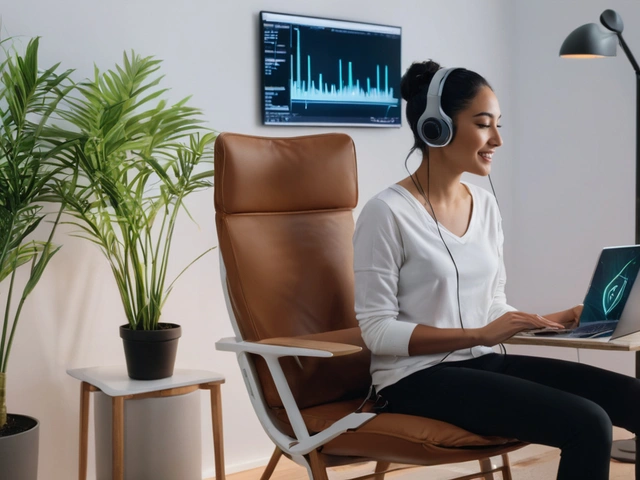Mindfulness for Dog Owners: Calm, Clear, Connected
Ever notice how your dog snaps you into the present? Mindfulness is simply paying attention to the moment, and you can use it to lower stress, stay focused, and deepen your bond with your dog. This isn't about long silent retreats. It's small, easy practices you can do today.
Start with five minutes. Sit with your dog and notice breath, heartbeat, or the weight of their body. Count five slow inhales and five slow exhales. If your mind wanders, gently bring it back without judging yourself. Doing this a little every day helps you stay steady during walks, vet visits, or noisy afternoons.
Quick routines you can do together
Try a grounding walk: leave the phone, walk slowly, and name three things you see, two things you hear, and one thing you feel. Make soft eye contact with your dog now and then. A one-minute check-in works too—place a hand on your dog’s chest, breathe together for six counts, and relax your shoulders. Use grooming or feeding times as mini practice sessions. Short habits like these build calm fast.
Use a short body scan while your dog rests. Move attention from feet to head, notice tight spots, and soften them. Dogs mirror body language; when you loosen, they do too. Before a car ride or vet trip spend two minutes breathing and touching their shoulders calmly. That signals safety.
Try box breathing: inhale 4, hold 4, exhale 4, pause 4. Do it while your dog sits or during a break. The steady rhythm calms your heart rate and gives your dog a calm leader to follow. Repeat twice.
Use mindfulness during training: before a session, breathe for thirty seconds, set one clear cue, and praise calmly. Dogs learn faster when the handler is steady. Tracking small wins like one extra sit or less pulling weekly shows real progress and keeps you motivated.
How it helps behavior and massage
When you stay calm, you make better choices. Instead of reacting to jumping or barking, you pause and respond clearly. That steady energy teaches your dog to settle. Owners who practice mindfulness report fewer stress reactions and smoother training sessions. Mindful presence also improves canine massage—your hands notice tension faster, you match pressure to their comfort, and sessions become more effective.
Signs you’re making progress: look for softer eyes, looser bodies, slower panting, and longer rest times after walks. Keep a short log: note the situation and one change you observed. Small wins every week matter more than perfect practice.
When to seek help: if your dog shows extreme fear or aggression, mindfulness helps but professional behavior support is necessary. Use mindfulness as a companion tool, not a replacement for training or veterinary advice.
Keep it simple. Link practices to existing routines like walks or meals, aim for consistency over length, and be kind to yourself. Tiny changes in how you show up will change how your dog feels, and that will change your home.

Mindfulness and Leadership: How Being Present Makes You a Better Leader
Mindfulness transforms leadership by building emotional intelligence, improving decision-making, and creating psychological safety. Leaders who practice presence see clearer, respond better, and build stronger teams.

Discovering Esalen: Pathway to Personal and Spiritual Growth
Nestled along the breathtaking coastline of Big Sur, the Esalen Institute is a sanctuary for those seeking spiritual awakening and personal growth. Known for its panoramic ocean views and legendary hot springs, this retreat offers workshops and immersive experiences that cater to the mind, body, and spirit. Discover how Esalen's rich history and unique practices can inspire transformative change in every visitor. Delve into the essence of Esalen and uncover tips for making the most of a visit to this iconic spiritual hub. Whether you're seeking connection, renewal, or understanding, Esalen serves as a beacon for enlightenment.

Mindfulness for Beginners: Getting Started with Ease
Delve into the world of mindfulness with this comprehensive guide tailored for beginners. Learn the basics of mindfulness, discover effective practices to integrate into your daily life, and explore tips to stay consistent on your journey to inner peace and reduced stress.

Embracing Serenity: Effective Strategies for Tackling Life's Complexities
Sometimes, life throws these complex riddles at us, right? You know, the ones that make us feel like we're in a maze with no exit. But here's the thing, I've realized that the key to unraveling them all starts with staying calm. Take a deep breath with me, and let's chat about how a dash of calmness can be that unexpected hero. I'm going to share my personal journey and some nifty little tips I've picked up along the way that have made a world of difference. It's amazing how a serene mindset can untangle the messiest situation.

The Role of Meditation in Achieving Work-Life Balance
As a man who constantly battles the demands of work and personal life, I've discovered an amazing tool for achieving balance - meditation. This post explores the role meditation plays in balancing work and personal life. It helps manage stress, improves focus, and promotes overall mental health. In my experience, incorporating meditation in my daily routine has drastically helped in maintaining a healthy work-life balance. I'll be sharing more benefits and tips in the article.

Biofeedback Techniques for Stress-Free Living
Aug, 1 2024



